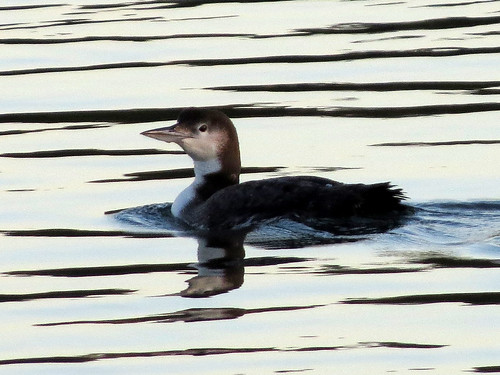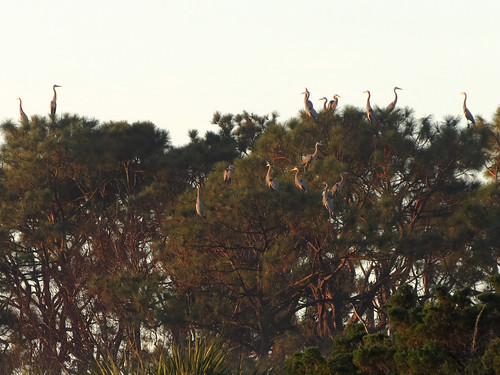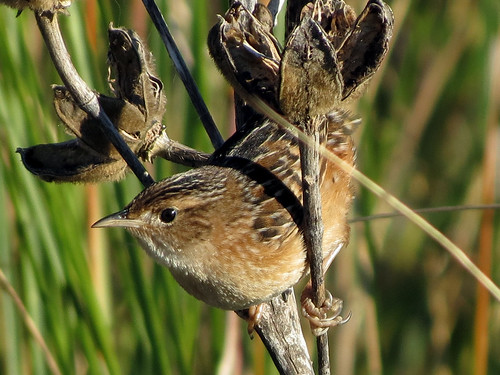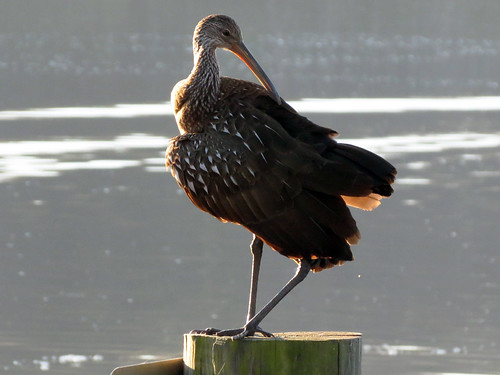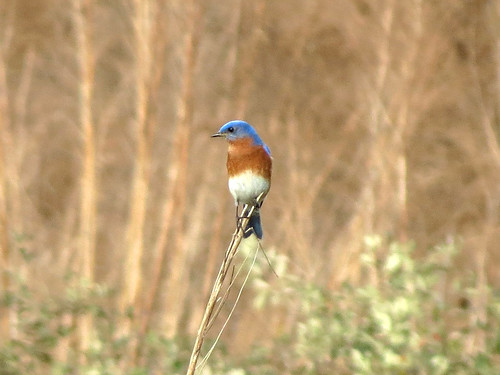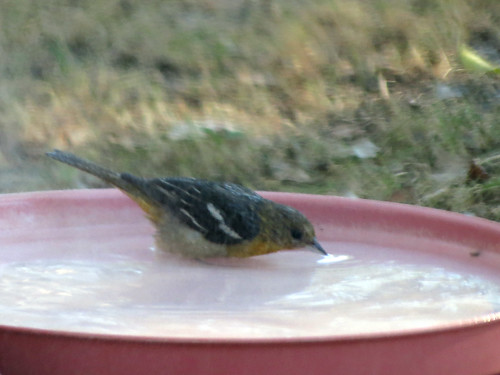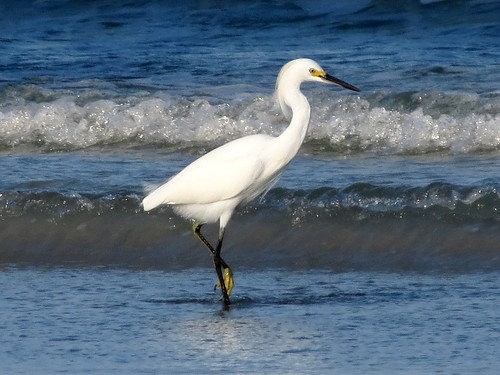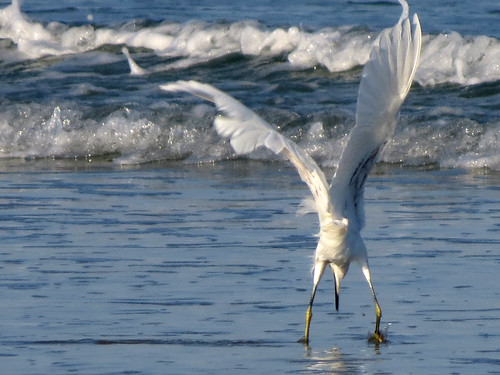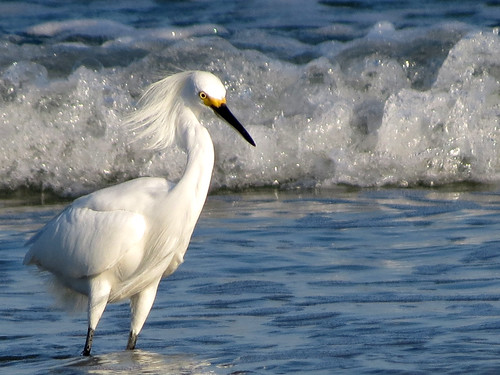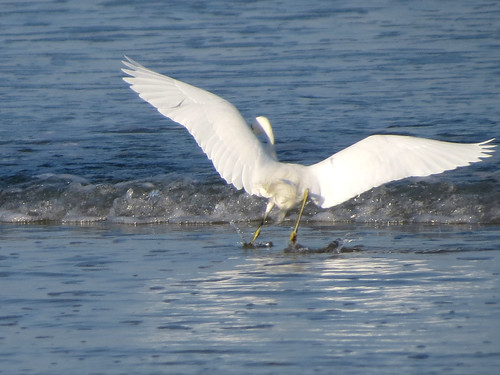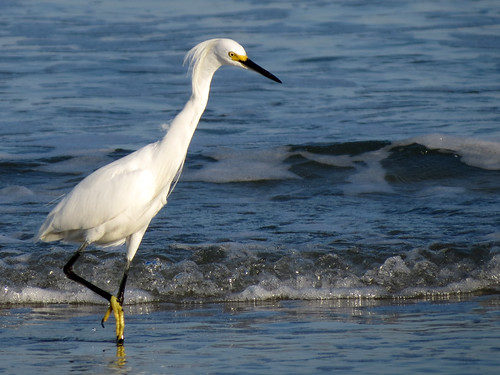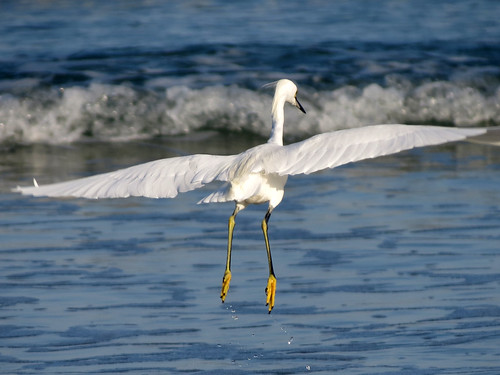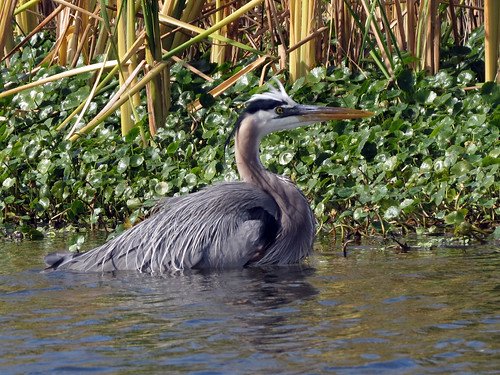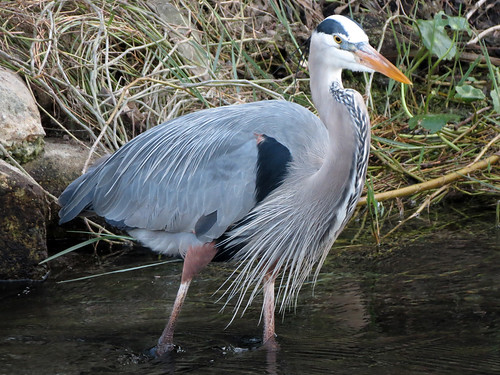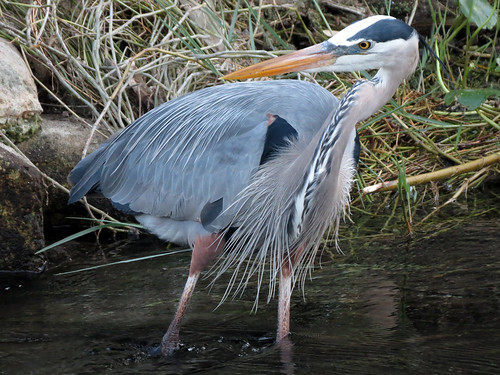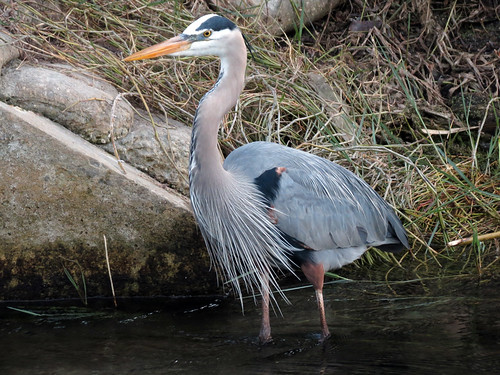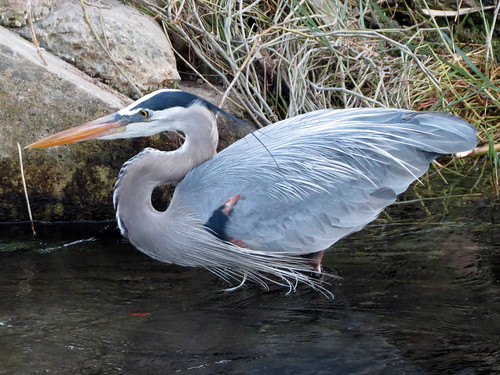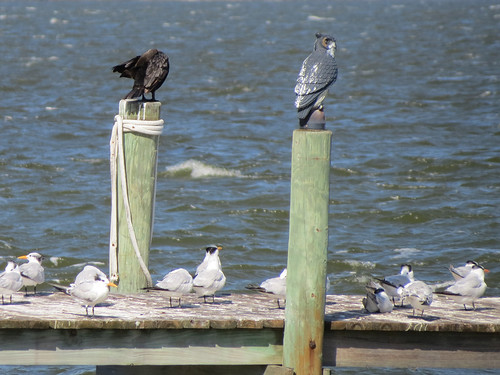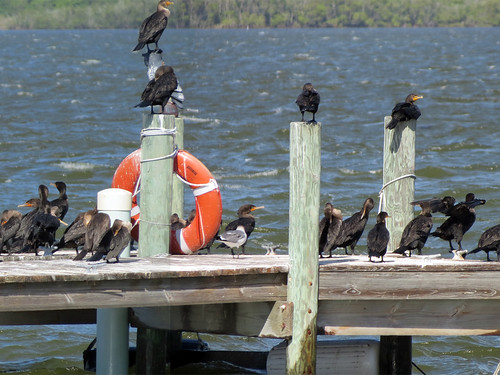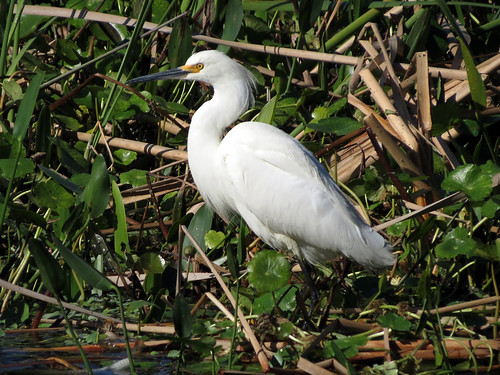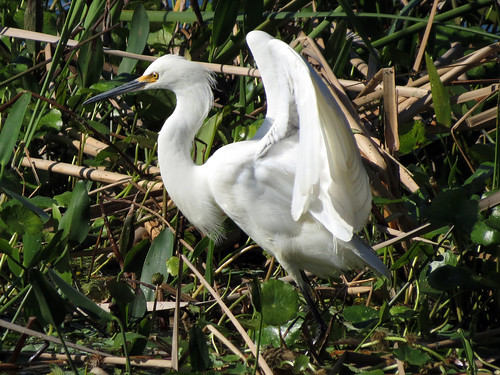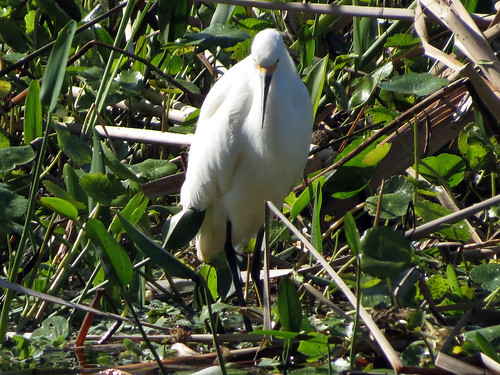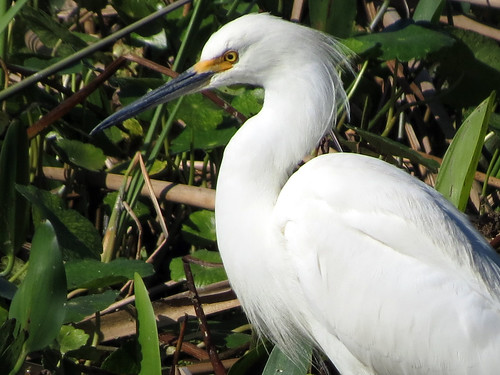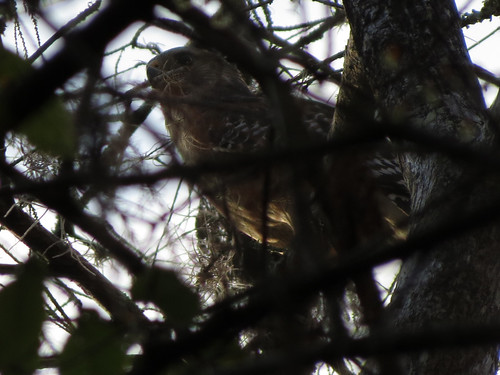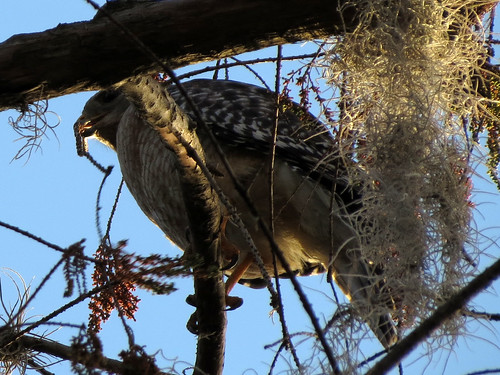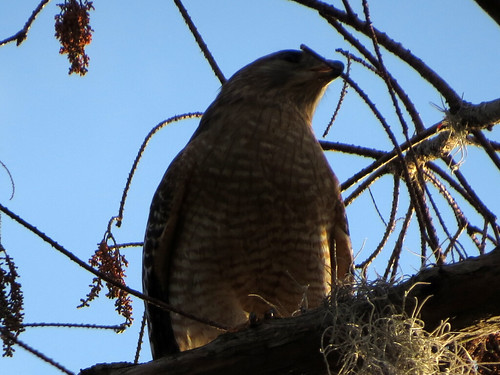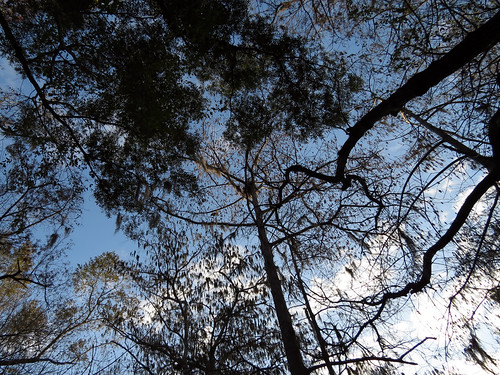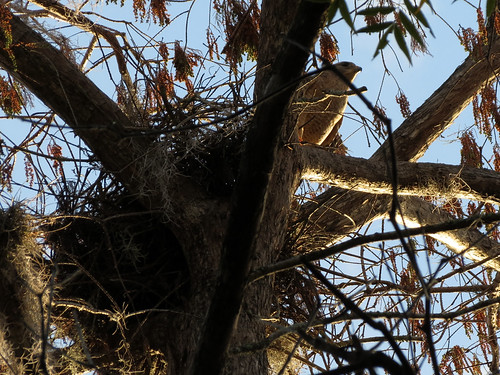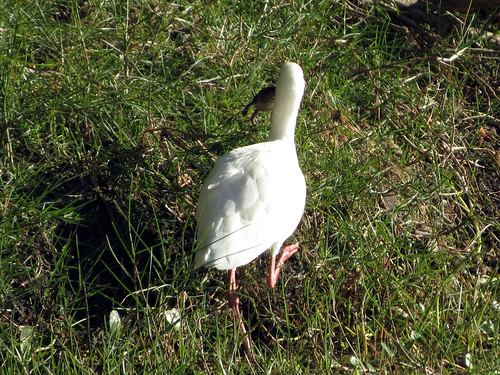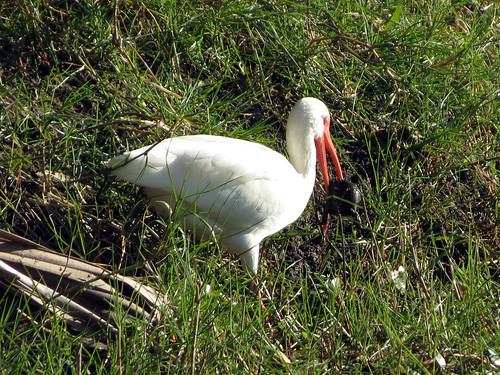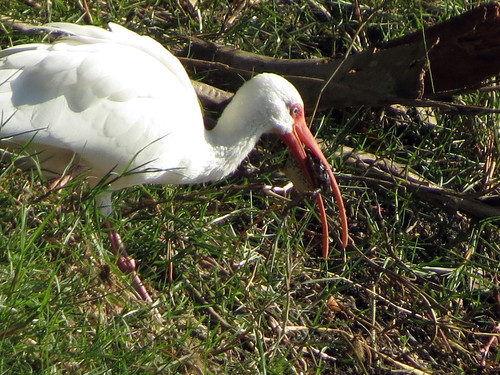For a while I was considering the docent program at the Central Florida Zoo & Botanical Gardens. The zoo, in Sanford, is just about 10 minutes away from where we live. Arthur and I paid our first visit to the zoo earlier this month, to see what the park is like and to see some of the raptors and other birds in the zoo’s programming.
Every Saturday and Sunday there are two scheduled bird programs.
At 11:30AM we saw the “Bird Show” on the Magpie Jay Stage. Here we learned about several different species which were either brought out on the glove or flown. Both Florida native species and birds found elsewhere were included in this program.
Two birds flew. A Harris’s Hawk flew between perches around the audience, and a Red-shouldered Hawk flew between handlers across the spectators.
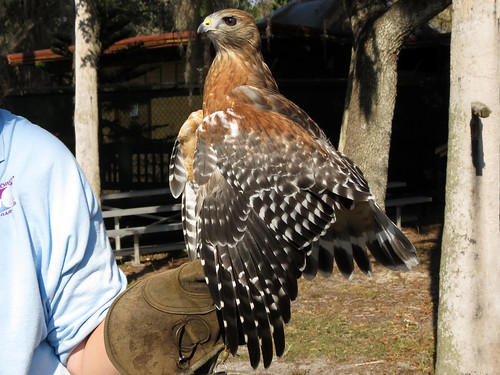
Red-shouldered Hawk
Other birds in this program were the Guira Cuckoo, found throughout South America, and the Black-throated Magpie-jay, found in Mexico.
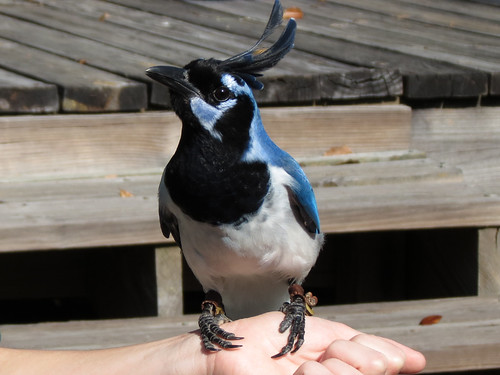
Black-throated Magpie-jay
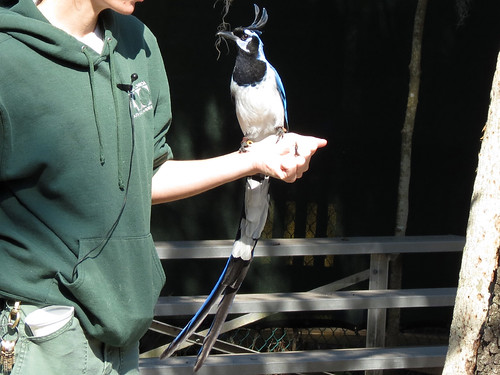
The incredibly long tail feathers of the Black-throated Magpie-jay
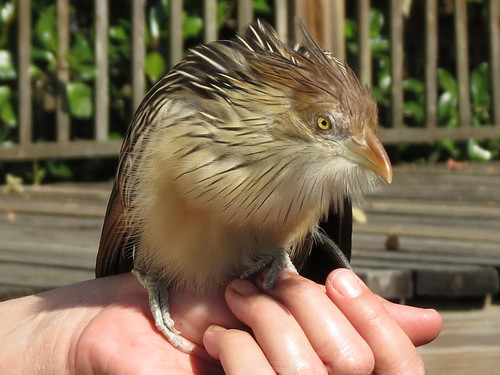
Guira Cuckoo
Three birds native to Florida were presented: an Eastern Screech Owl; a Red-tailed Hawk, and the previously-mentioned Red-shouldered Hawk. These three were all permanently non-releasable birds with injuries; the Red-tailed Hawk was originally found in our new hometown of DeBary. I was interested to learn that in our part of Florida, grey phase Eastern Screech Owls are more common than red phase, which is the type in their program. This bird was originally found in the eastern part of Volusia County.
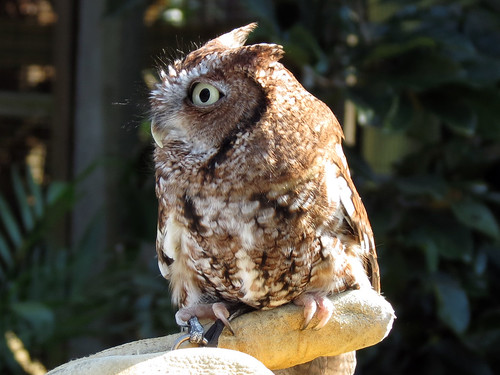
Eastern Screech Owl
At 1:00PM we went to the “Raptor Encounter” program, which was a short informal program featuring Ray, a Florida Bald Eagle with a permanent wing injury. The handler was joined by a fellow zookeeper who told us about Bald Eagles in general and about Ray specifically.
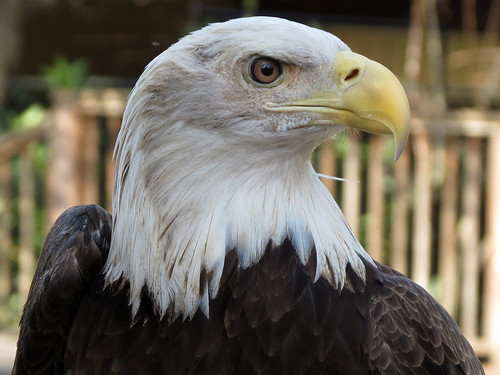
Bald Eagle
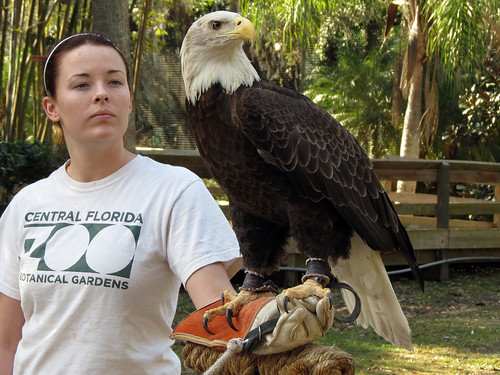
Bald Eagle and handler
The zoo has a number of other birds on display, though I’ll admit my focus during this visit was mainly on the birds in the educational programs.
Two Bald Eagles were on display in a completely open exhibit; both are non-flighted but we watched them move around with ease among their open-air perching.

We also saw three macaws in a different open-air display, including a snoozing Green-winged Macaw.

The Central Florida Zoo is involved in 11 Species Survival Plans, working on captive breeding critically endangered species, an impressive number for a small institution. Though the zoo is relatively small, we enjoyed our visit. The docent program looks like a good one; unfortunately the timing of the training this winter/spring doesn’t really work out for me / us right now. The training usually takes place twice a year; we may think about it again in the fall!
Share the birds, share the love!

